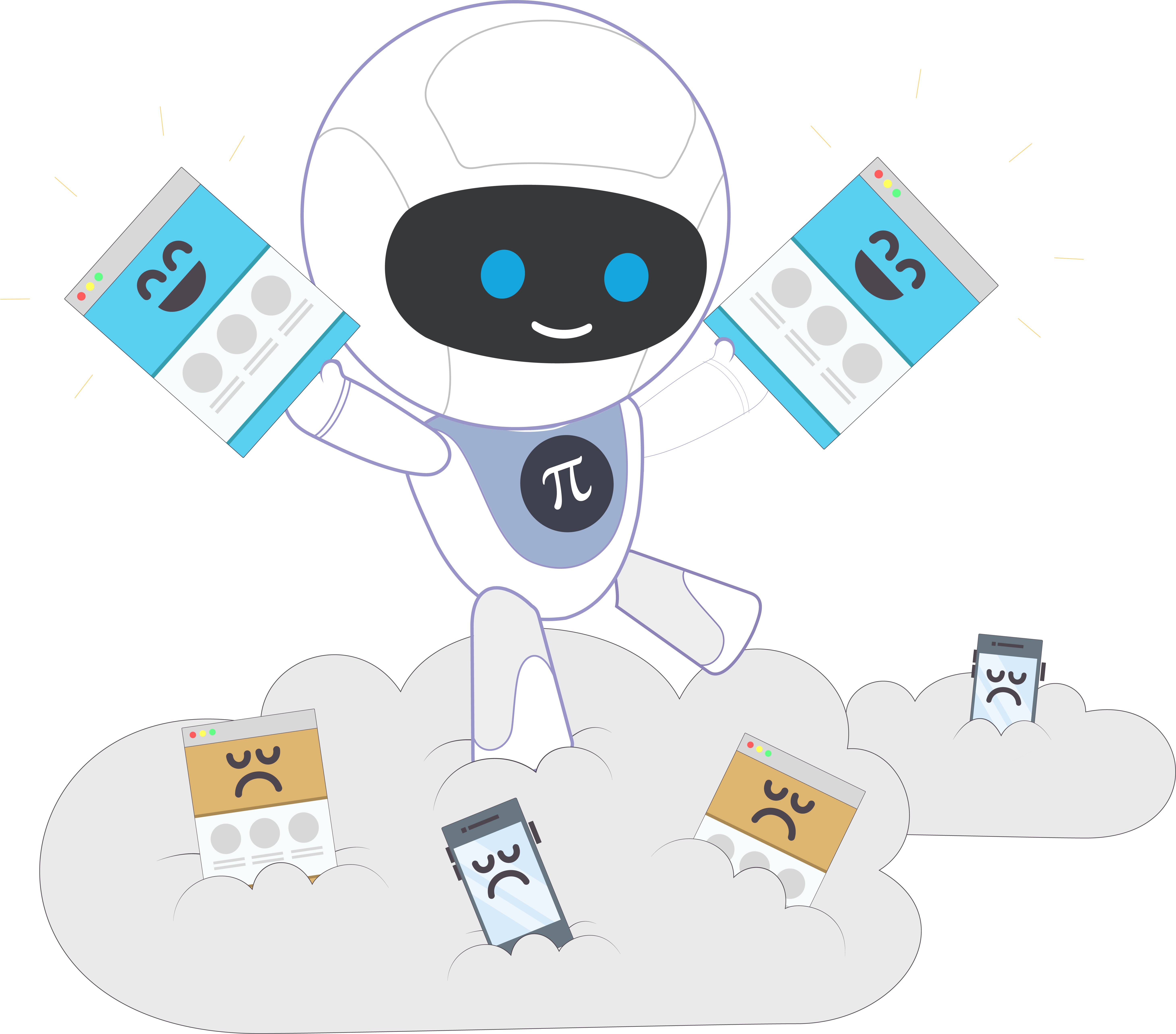Artificial intelligence is allowing us all to consider surprising new ways to simplify the lives of our customers. As a product developer, your central focus is always on the customer. But new problems can arise when the specific solution under development helps one customer while alienating others.
We tend to think of AI as an incredible dream assistant to our lives and business operations, when that’s not always the case. Designers of new AI services should consider in what ways and for whom might these services be annoying, burdensome or problematic, and whether it involves the direct customer or others who are intertwined with the customer. When we apply AI services to make tasks easier for our customers that end up making things more difficult for others, that outcome can ultimately cause real harm to our brand perception.
Let’s consider one personal example taken from my own use of Amy.ai, a service (from x.ai) that provides AI assistants named Amy and Andrew Ingram. Amy and Andrew are AI assistants that help schedule meetings for up to four people. This service solves the very relatable problem of scheduling meetings over email, at least for the person who is trying to do the scheduling.
After all, who doesn’t want a personal assistant to whom you can simply say, “Amy, please find the time next week to meet with Tom, Mary, Anushya and Shiveesh.” In this way, you don’t have to arrange a meeting room, send the email, and go back and forth managing everyone’s replies. My own experience showed that while it was easier for me to use Amy to find a good time to meet with my four colleagues, it soon became a headache for those other four people. They resented me for it after being bombarded by countless emails trying to find some mutually agreeable time and place for everyone involved.
Automotive designers are another group that’s incorporating all kinds of new AI systems to enhance the driving experience. For instance, Tesla recently updated its autopilot software to allow a car to change lanes automatically when it sees fit, presumably when the system interprets that the next lane’s traffic is going faster.
In concept, this idea seems advantageous to the driver who can make a safe entrance into faster traffic, while relieving any cognitive burden of having to change lanes manually. Furthermore, by allowing the Tesla system to change lanes, it takes away the desire to play Speed Racer or edge toward competitiveness that one may feel on the highway.
However, for the drivers in other lanes who are forced to react to the Tesla autopilot, they may be annoyed if the Tesla jerks, slows down or behaves outside the normal realm of what people expect on the freeway. Moreover, if they are driving very fast and the autopilot did not recognize they were operating at a high rate of speed when the car decided to make the lane change, then that other driver can get annoyed. We can all relate to driving 75 mph in the fast lane, only to have someone suddenly pull in front of us at 70 as if they were clueless that the lane was moving at 75.
For two-lane traffic highways that are not busy, the Tesla software might work reasonably well. However, in my experience of driving around the congested freeways of the Bay Area, the system performed horribly whenever I changed crowded lanes, and I knew that it was angering other drivers most of the time. Even without knowing those irate drivers personally, I care enough about driving etiquette to politely change lanes without getting the finger from them for doing so.

Another example from the internet world involves Google Duplex, a clever feature for Android phone users that allows AI to make restaurant reservations. From the consumer point of view, having an automated system to make a dinner reservation on one’s behalf sounds excellent. It is advantageous to the person making the reservation because, theoretically, it will save the burden of calling when the restaurant is open and the hassle of dealing with busy signals and callbacks.
However, this tool is also potentially problematic for the restaurant worker who answers the phone. Even though the system may introduce itself as artificial, the burden shifts to the restaurant employee to adapt and master a new and more limited interaction to achieve the same goal — making a simple reservation.
On the one hand, Duplex is bringing customers to the restaurant, but on the other hand, the system is narrowing the scope of interaction between the restaurant and its customer. The restaurant may have other tables on different days, or it may be able to squeeze you in if you leave early, but the system might not handle exceptions like this. Even the idea of an AI bot bothering the host who answers the phone doesn’t seem quite right.
As you think about making the lives of your customers easier, consider how the assistance you are dreaming about might be more of a nightmare for everyone else associated with your primary customer. If there is a question regarding the negative experience of anyone related to your AI product, explore that experience further to determine if there is another better way to still delight them without angering their neighbors.
From a user-experience perspective, developing a customer journey map can be a helpful way to explore the actions, thoughts and emotional experiences of your primary customer or “buyer persona.” Identify the touchpoints in which your system interacts with innocent bystanders who are not your direct customers. For those people unaware of your product, explore their interaction with your buyer persona, specifically their emotional experience.
An aspirational goal should be to delight this adjacent group of people enough that they would move toward being prospects and, eventually, becoming your customers as well. Also, you can use participant ethnography to analyze the innocent bystander in relation to your product. This is a research method that combines the observations of people as they interact with processes and the product.
A guiding design inspiration for this research could be, “How can our AI system behave in such a way that everyone who might come into contact with our product is enchanted and wants to know more?”
That’s just human intelligence, and it’s not artificial.








